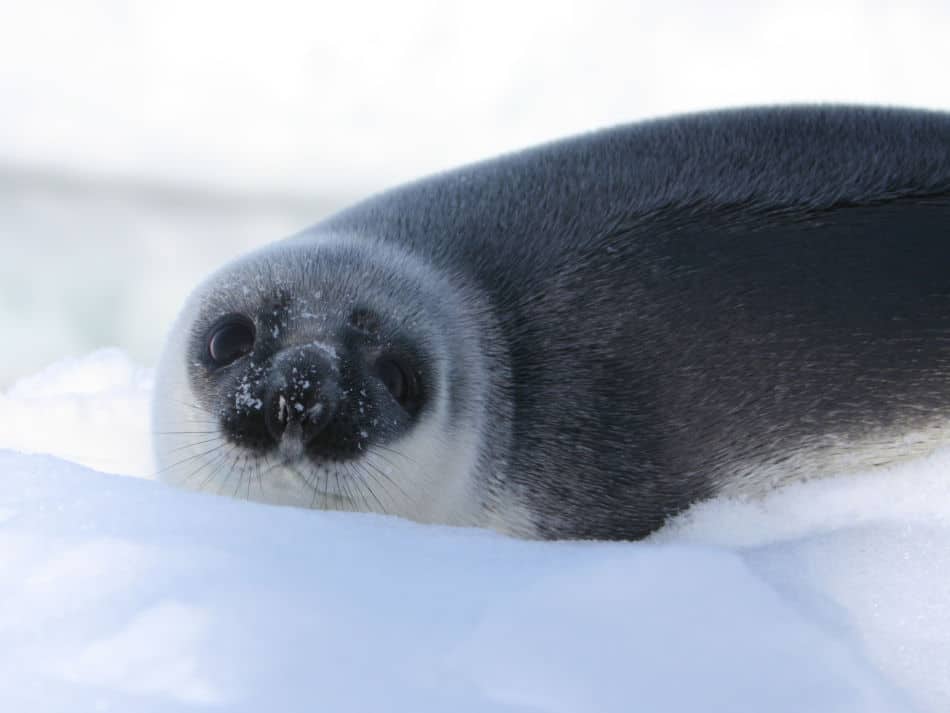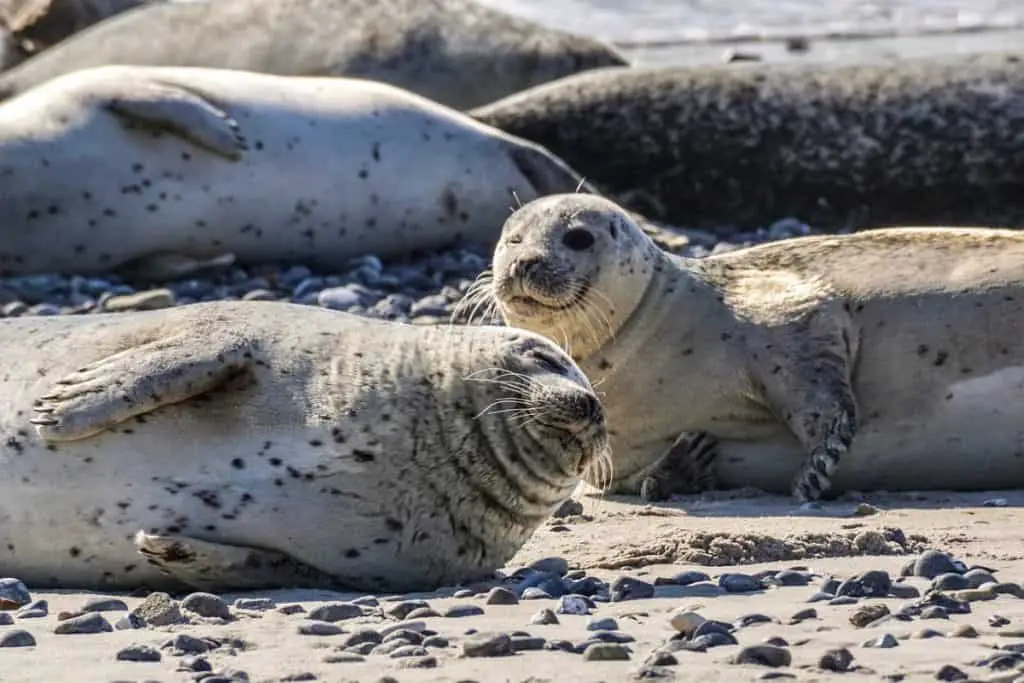Marine mammal biologists have long studied the feeding habits of seals. They are particularly interested in what these animals eat and how they acquire their food sources.
This article will examine the diets of seals, focusing on what types of foods they consume both in captivity and in the wild. It will also explore the various foraging techniques that seals use to capture prey.
The information presented here should provide a better understanding of the dietary requirements necessary to sustain healthy populations of seals.

Overview Of Seal Diets
Seals are marine mammals whose diets consist of a variety of different food sources. The hunting patterns and nutrition habits of seals have been studied extensively by marine biologists, providing insight into the important role they play in their environment.
The main dietary staples for seals include fish, crustaceans, cephalopods, seabirds and other small animals found near shorelines or on the open sea. Seals rely heavily on their sense of sight to locate prey which can be done both during day and night time dives. Their powerful jaws and strong claws along with sharp canine teeth allow them to catch large amounts of food in a single dive.
Seals also feed on algae and kelp found attached to rocks or floating freely in the ocean. They use specialized snouts that act as suction cups to extract this type of food from rocks or crevices in shallow waters.
Additionally, some species even eat carrion if it is available when no other options exist. By consuming these various types of items, seals help maintain balance within their ecosystem while also sustaining themselves nutritionally.
How Big Are Seals: Unveiling the Size of Aquatic Mammals
Types Of Foods Consumed By Seals
Seals are opportunistic feeders and can consume a variety of different foods. They primarily eat fish, cephalopods, crustaceans, mollusks, krill and other small marine organisms. Seals also have been known to consume birds, sea turtles and even sharks in rare cases.
The fishing behavior of seals is highly varied, ranging from shallow-water bottom feeding to open water hunting for pelagic prey species. In addition to their diverse diet options, seals obtain important nutritional benefits from the consumption of these animals. For example, many seal species rely on omega-3 fatty acids found in certain types of seafood such as mackerel or salmon for healthy development and growth.
Overall, seals are incredibly adaptable predators that use various strategies to acquire food sources essential for their survival.
Some advantages they possess include:
- Flexible fins designed for swimming quickly over long distances
- Powerful jaw muscles which allow them to crush hard shells like clams and crabs
- Sharp canine teeth used to tear apart large chunks of flesh from larger prey items
By capitalizing on these features, seals are able to acquire the nutrients necessary to sustain themselves in an ever-changing ocean environment.
Dietary Requirements Of Captive Seals
The dietary requirements of captive seals are complex and must be carefully balanced in order to ensure that the animal is receiving proper nutrition. Seal nutrition consists of a variety of components, including fats, proteins, vitamins, minerals, and carbohydrates. The diet should be tailored specifically for each seal based on its individual needs as well as taking into account age-related differences in nutritional requirements.
In terms of macronutrients, fat should make up about 25%–35% of the total calories consumed by a seal. Proteins should constitute between 15%-20%, with carbohydrates making up the remaining 45%-50%. Vitamins and minerals play an important role in providing essential nutrients for optimal health and must also be included in their diets at appropriate levels.
Furthermore, it is important to feed different types of food to provide variety which will stimulate appetite and help prevent boredom-induced eating problems. A wide range of foods can be provided to seals such as fish (eels, herring), squid, crustaceans (shrimp or crab), greens (romaine lettuce or spinach) supplemented with marine mammal vitamin premixes designed to meet their specific dietary balance needs.
Provisioning these items on a daily basis ensures that captive seals receive all the necessary nutrients they need while also reducing stress associated with underfeeding or overfeeding them.
Dietary Requirements In The Wild
Seals are known to be opportunistic feeders, meaning they will adapt their diet according to the availability of prey in the wild. In general, most seals primarily eat fish and mollusks such as squid, octopus, crab and shrimp. Some species also rely on marine mammals like sea lions or dolphins for sustenance.
Seals have adapted various strategies to acquire food in the wild:
- Hunting – Seals use their sharp claws and powerful jaws to hunt underwater for small prey like fish, crustaceans, shellfish and cephalopods. They can dive up to depths of 600 meters while hunting.
- Foraging – Seals search shallow waters for slow-moving bottom dwelling animals (i.e., seagrass beds). Additionally, some species may scavenge from whale carcasses or steal food from other predators (such as orcas).
- Predation Patterns – Depending on the location and seasonality of food sources, seals tend to migrate in order to seek out new feeding grounds. Furthermore, seasonal changes often cause shifts in predation patterns among populations due to competition between individuals for limited resources.
Therefore it is clear that seals utilize a variety of adaptive strategies when searching for food in the wild. Through careful observation of these behaviors over time we can gain invaluable insight into seal ecology and conservation management efforts across different regions worldwide.
Foraging Techniques Used By Seals
As apex predators, seals have a wide range of foraging strategies to meet their nutritional needs. They typically hunt alone but can also work together in groups when necessary. Seals are opportunistic feeders and will consume whatever prey is available, such as fish, squids, crustaceans, mollusks and other marine animals.
Depending on the species of seal, foraging techniques may vary significantly due to differences in size, habitat preferences and social dynamics. The most common hunting strategy employed by pinnipeds involves diving underwater and searching for prey using their keen sense of smell and sight. The dive times can last from one to two minutes up to several hours depending on the depth needed to find food sources.
In addition to solitary dives, some species like elephant seals display cooperative behaviors during group hunts where individuals work together to increase success rates. During these collective efforts they use vocalizations and physical contact with each other which is believed to be an effective communication tool that helps coordinate movements while tracking potential prey items.
To maximize efficiency while finding food resources, fur seals employ a technique called ‘perimeter-seeking’ or ‘beach-walking’ behavior where they travel around shallow waters close to shorelines looking for opportunities along rocky outcrops or near kelp beds that could hold potential meals. Their ability to utilize such tactics has been essential in helping them survive over time despite changing environmental conditions.
Prey Availability And Its Impact On Seal Diets
Seals forage in a wide variety of habitats and utilize different techniques to capture prey. However, the availability of food sources will ultimately dictate which species are available to be consumed by seals. It is important to consider how these marine mammals must adjust their diet based on what prey is accessible in certain environments, as well as other factors such as predator avoidance.
The diet of seals consists primarily of fish and invertebrates including squid, crustaceans, octopus, and bivalves. Additionally, they also eat larger animals such as sea birds, whales or dolphins that venture too close to shorelines. This dietary breadth can be attributed to both the versatility and adaptability of seals who are able to travel between multiple habitats throughout their range.
Seals have evolved an array of tactics for capturing prey depending on where they feed; from diving deep underwater chasing fast-moving fish with powerful swipes using their flippers to scavenging carrion washed up onto land from the tide.
However, it is not only physical access that dictates what prey items a seal consumes but also its ability to detect potential predators lurking nearby. To ensure safety while feeding, many species will adopt strategies such as making quick dives into shallow waters or positioning themselves near reefs or kelp beds for protection against aerial predation.
By being aware of potential threats in its environment a seal may opt for more nutritious yet less risky foods than those found in deeper water column levels or away from sheltering structures like rocks or coral crevices. In this way food availability coupled with predator evasion impacts seal diets significantly when selecting meals each day.
Conservation Implications For Seal Populations
The diet of seals is largely composed of fish and invertebrates, which are usually sourced from the surrounding marine environment. This can have significant implications on seal populations due to climate change and overfishing.
As water temperatures rise as a result of global warming, some species may become more scarce or even unavailable in certain areas where they once thrived. Additionally, overfishing has led to reduced numbers of many key prey species that seals rely upon for sustenance.
These changes in available food sources could cause dramatic shifts in the distribution patterns of seals and their overall population dynamics. Seals might be forced to migrate further away from traditional breeding grounds if sufficient food sources cannot be found within reachable distances. The impacts of this would likely vary across different species based on their individual adaptability and resource requirements.
Conservation strategies must take into account these potential threats posed by climate change and overfishing when developing plans for protecting seal populations. Not only should efforts be made to protect existing habitats but also work should be done to reduce human-induced stressors like pollution and overexploitation so that future generations can continue to appreciate the presence of these iconic creatures in our coastal waters.

Conclusion
The complexity of seal diets is remarkable, and the implications for their conservation are far reaching.
Seals rely on a variety of prey items to meet their dietary requirements in both natural and captive environments; however, their ability to access these resources can be affected by factors such as predation pressure, habitat availability, and oceanographic conditions.
It is clear that understanding how seals forage for food and what they consume has critical implications for their populations over time.
As marine mammal biologists continue to study the intricacies of seal diets from multiple perspectives, it will become increasingly evident that preserving their habitats and ensuring adequate prey availability must remain top priorities if we wish to ensure healthy seal populations into the future.

